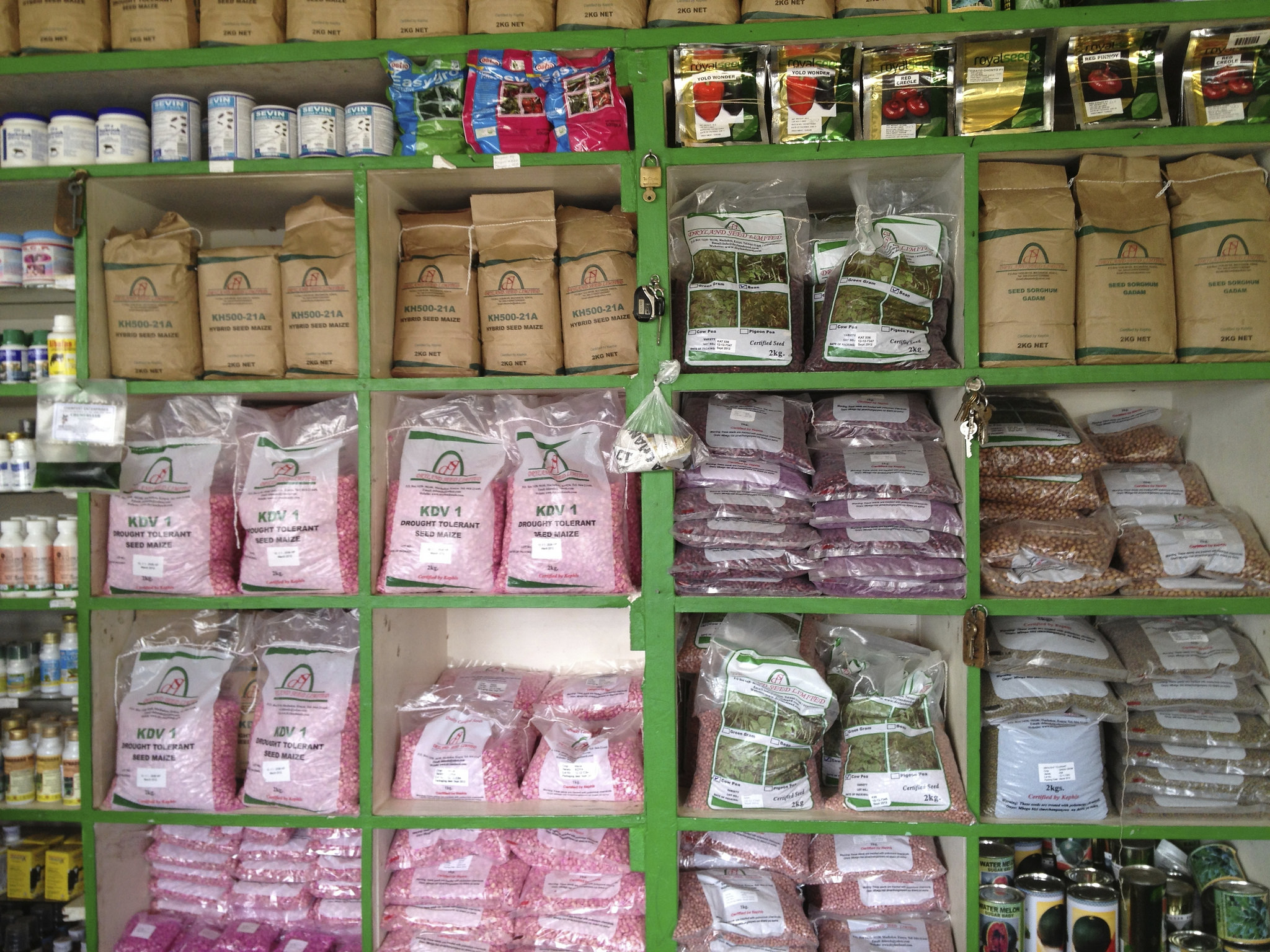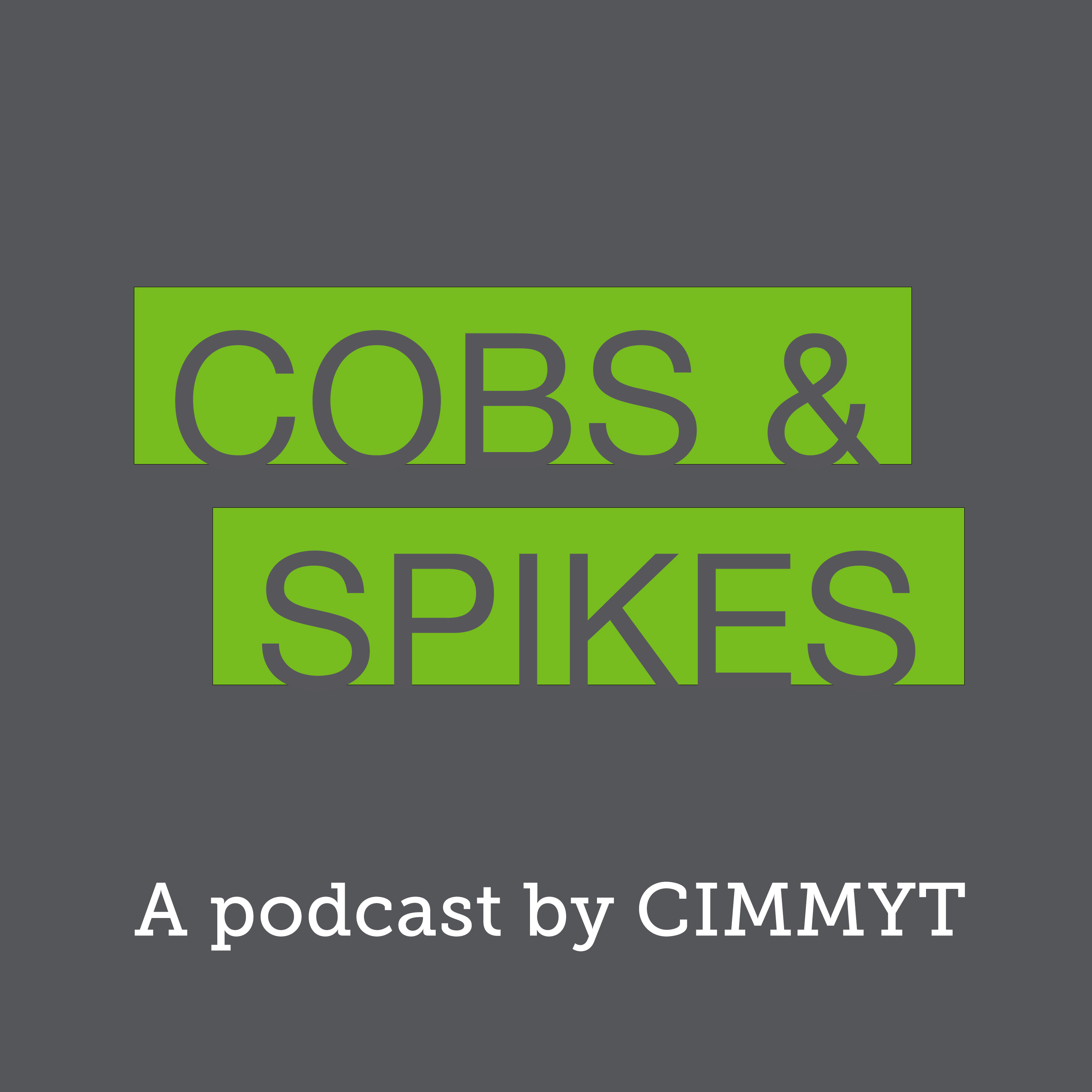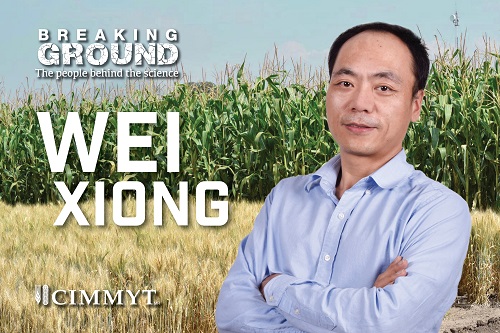In the early 20th century, Aaron Aaronsohn, a prominent agronomist best known for identifying the progenitor of wheat, began looking for durum wheat landraces in Israel. He traveled to villages across the country, carefully collecting and recording details of the local varieties used in each area.
This task was not without purpose. Aaronsohn recognized that as increasing numbers of settlers like himself came to the territory, the varietal change from the introduction of new and competitive wheat varieties and the rapid intensification of agriculture would soon cause all the traditional structures he had identified to disappear.

Aaronsohn was one of the first to begin collecting germplasm in the region, but others saw the importance of collecting before large-scale change occurred. For example, Russian botanist Nikolai Vavilov gathered samples from Israel on one of his expeditions through the Middle East. By the end of the century, a number of collections had been established, but overall efforts at conservation were fragmented.
“That’s why we say the collection was on the verge of extinction,” explains Roi Ben-David, a researcher at the Volcani Center, Israel’s Agricultural Research Institute (ARO). “There were single accessions in genebanks around the world but no one really gave them special treatment or saw their value. Many were in private collections; others were simply lost.”
When Ben-David and his colleagues began looking for landraces six years ago, even the collection housed at the Israeli Genebank (IGB) was disappointing, with many samples stored in unmarked boxes in sub-optimal conditions. “When we came in nobody was really trying to study what we had and put it together to represent the area’s wheat landscape as it was 100 years ago.”
Long-term efforts to restore and conserve a collection of Israeli and Palestinian wheat landraces (IPLR) have led to the restoration of 930 lines so far, but there are many varieties that cannot be recovered. Therefore, it came as a great surprise to Ben-David when he arrived at the International Maize and Wheat Improvement Center (CIMMYT) headquarters in Mexico and stumbled upon one of the collections presumed lost. “I think it was actually my first week at CIMMYT when I spotted a demonstration plot growing one of the lost varieties — a subset of the Ephrat-Blum collection — and I couldn’t believe it.”
He had heard about this collection from the late Abraham Blum, but had never been able to locate it. “Someone might have moved the seeds, or maybe the box was not well labelled and thrown out. We don’t know, but needless to say it was a very good surprise to rediscover 64 of our missing lines.”
What prompted you and your colleagues to start looking for landraces in Israel?
We began because we recognized local landraces are good genetic resources but unfortunately, we couldn’t find any. It wasn’t so much that they didn’t exist, but the accessions were scattered across the world, mostly in private collections in countries like the USA or Australia. The Israeli Genebank, which sits only two floors above my office, had a few buckets of germplasm but nobody really knew what was inside.
The Middle East and the Fertile Crescent are centers of diversity, not only for wheat but for all crops that were part of the Neolithic revolution 10,000 years ago. They started here – the exact point of origin was probably in what is now southeast Turkey – so we have had thousands of years of evolution in which those landraces dominated the agricultural landscape and adapted to different environments.
Why do you think so much of the collection was lost?
The lines from Israel were lost because their conservation simply wasn’t prioritized. Losses happen everywhere but what was missing in this case was the urgency and understanding of just how important these collections are. Luckily, the current manager of the IGB, who is a fundamental partner in building the IPLR, understood the need to prioritize this and allocated a budget to conserve it as one collection.
What is the value of conserving landraces and why should it be prioritized?
Landraces are an extremely important genetic resource. Wild relatives are the biggest treasure, but breeders are usually reluctant to use them because they are so very different from modern varieties. So landraces form the link between these two, having already been domesticated and developed within farming systems while remaining genetically distinct from the modern. In wheat, they’re quite easy to spot because of how tall they are compared to the semi-dwarf varieties that replaced them in the 20th century.
There are two main reasons why we need to prioritize conservation. First, we believe that the evolution under domestication in this region is important to the community as a whole. Second, it is now a critical time, as we’re getting further from the time in which those traditional lines were in use. The last collection was carried out in the 1980s, when people were still able to collect authentic landraces from farmers but this is just not possible any more. We travelled all over the country but the samples we collected were not authentic – most were modern varieties that farmers thought were traditional. Not everybody knows exactly what they’re growing.
The time factor is critical. If we were to wake up 50 years from now and decide that it’s important to start looking for landraces, I don’t know how much we could actually save.

Are there any farmers still growing landraces in Israel?
When we started looking for farmers who are still growing landraces we only found one farm. It is quite small – only about ten acres shared between two brothers. They grow a variety which is typically used to make a traditional food called kube, a kind of meat ball covered in flour and then then either fried or boiled. If you boil it using regular flour it falls apart, so people prefer to use a landrace variety, which is what the brothers grow and are able to sell for up to six times as much as regular durum wheat in the market. However, they’re not really interested in getting rich; they’re just trying to keep their traditions alive.
How are you and your colleagues working to conserve the existing collection?
There are two approaches. We want to develop is ex-situ conservations to preserve the diversity. As landraces are not always easy to conserve in a genebank, we also want to support in-situ conservation in the field, like traditional farmers have done. Together with the IGB we’ve distributed seed to botanical gardens and other actors in the hope that at least some of them will propagate it in their fields.
Having established the collection, we’re also trying to utilize it for research and breeding as much as possible. So far we’ve characterized it genetically, tested for drought tolerance and other agronomic traits and we’re in talks to start testing the quality profile of the lines.
Did you continue working on this while you were based at CIMMYT?
Yes, this was an additional project I brought with me during my sabbatical. The main success was working with Carolina Sansaloni and the team at the Genetic Resources program to carry out the genotyping. If it were left to my own resources, I don’t think we could have done it as the collection contains 930 plant genotypes and we only had the budget to do 90.
Luckily, CIMMYT also has an interest in the material so we could collaborate. We brought the material, CIMMYT provided technical support and we were able to genotype it all, which is a huge boost for the project. We had already been measuring phenotypes in Israel, but now that we have all the genetic data as well we can study the collection more deeply and start looking for specific genes of interest.
What will happen to the lines you discovered at CIMMYT?
They’ve been sent back to Israel to be reintegrated into the collection. I want to continue collaborating with people in CIMMYT’s Genetic Resources program and genebank to do some comparative genomics and assess how much diversity we have in the IPLR collection compared with what CIMMYT has. Is there any additional genetic diversity? How does it compare to other landraces collections? That is what we want to find out next.
Roi Ben-David is based at Israel’s Agricultural Research Organization (ARO). He works in the Plant Institute, where his lab focuses on breeding winter cereals such as wheat. He has recently completed a one-year sabbatical placement at the International Maize and Wheat Improvement Center (CIMMYT).
CIMMYT’s germplasm banks contain the largest and most diverse collections of maize and wheat in the world. Improved and conserved seed is available to any research institution worldwide.


 Nutrition, health and food security
Nutrition, health and food security 
